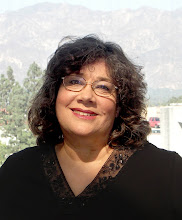
Scullery Captain* wins with his/her 12:27 p.m. Tuesday guess "Trash/debris being collected to be burned in the City's Power Plant on Glenarm(?)."
In the photo above, shot in 1933, rubbish is piled up at the new incinerator operated by Pasadena's Municipal Light and Power Department (now called Pasadena Water and Power, or PWP).
It was one of Pasadena's first attempts at recycling.
From PWP's book "100 Years of Community-Owned Power":
Long before the era of landfills and waste disposal systems, Pasadena faced what a 1930s Municipal Light and Power annual report called a "rubbish condition," with combustible rubbish unpleasantly burned in open pits, causing smoke to drift over the region. At one point the City used an incinerator on Raymond Avenue north of Glenarm Street, but it became obsolete. So, the City turned to Municipal Light and Power to design and construct a rubbish-burning incinerator adjacent to the Glenarm Power Plant.
Built by department employees primarily using equipment discarded from the power plant, the incinerator -- designed to handle one hundred tons of rubbish per day in either of its two furnaces -- began operation in November 1933. Besides correcting "a perplexing situation which caused the general city considerable concern," as Municipal Light and Power's 1934-35 annual report noted, the incinerator saved Pasadena taxpayers about $11,000 annually.
Department employees developed the incinerator with the plan to convert the disposed-of waste material into steam power for feedwater heating at the Glenarm Power Plant. Though some challenges ensued, it worked. Enough steam was produced to equal one barrel of fuel oil for each three tons of rubbish burned, and the byproduct obtained from the steam during the burning operation was used in the plant.
The incinerator continued to operate over the years, and when the City placed a ban on the backyard burning of combustible materials in 1957, the department expanded the incinerator's capacity to 250 tons per day, with some refuse delivered by City employees in a new backyard pickup program.
For the department's power plant employees, having the incinerator on-site definitely had its perks. Retiree Herman "Tex" Romine recalled dairy trucks bringing in partially thawed but packaged ice cream that hadn't sold to dump in the incinerator. "Everybody would come over and get all the ice cream they could. We had free ice cream for a week or so," he said, adding that employees with fireplaces also got plenty of firewood; in fact they never ran out of it in winter.
But the supply of free ice cream and firewood couldn't last forever. In 1965, Pasadena's Engineering Street Department decided to take rubbish to the Scholl Canyon Disposal Area instead, which reduced the income from the incinerator. The department ceased operating the incinerator on January 1, 1967, and then demolished the equipment to prepare the land for other uses, ending yet another colorful chapter in the department's history.
* SC, please e-mail me at aerdman@cityofpasadena.net and I'll tell you about your fabulous prize!

8 comments:
No more free ice cream. What a great re-cycling story, though.
Congrats to Scullery Captain!
Congrats to SC!
PIO, you always have the poop.
I should've said "the scoop!" Would've been better.
Hey, Petrea, I'm even willing to be a pooper scooper!
Just not on evenings and weekends!
PDP, it's embedded into your brain by your pooch Boz: "PDP you always have the Poop."
I want all the poop
Post a Comment